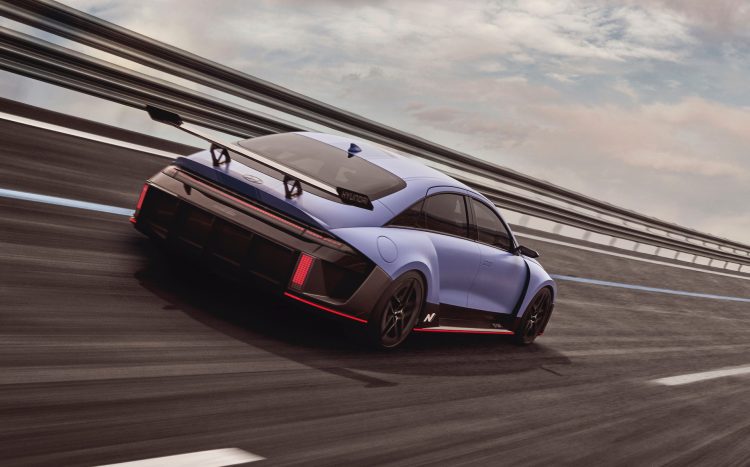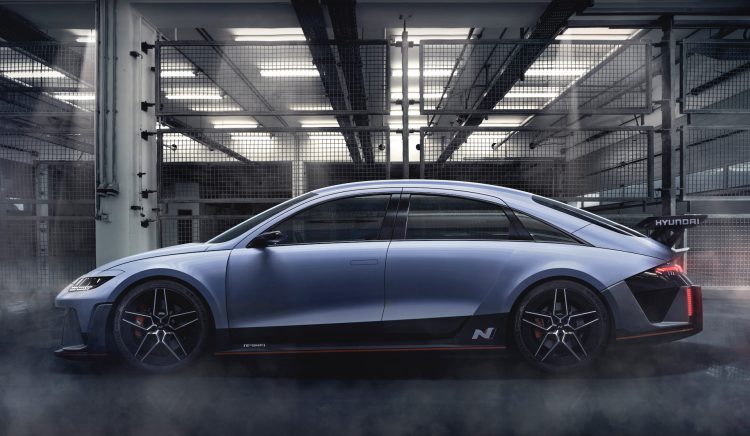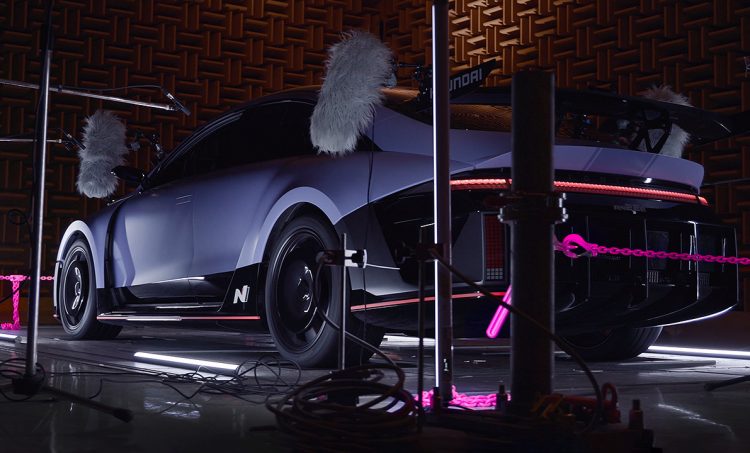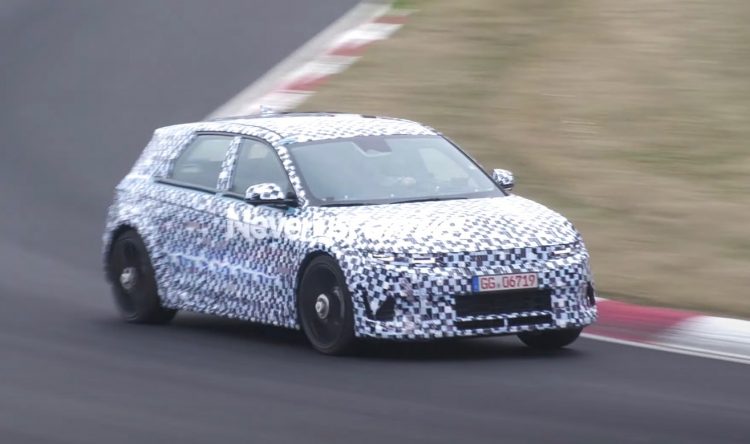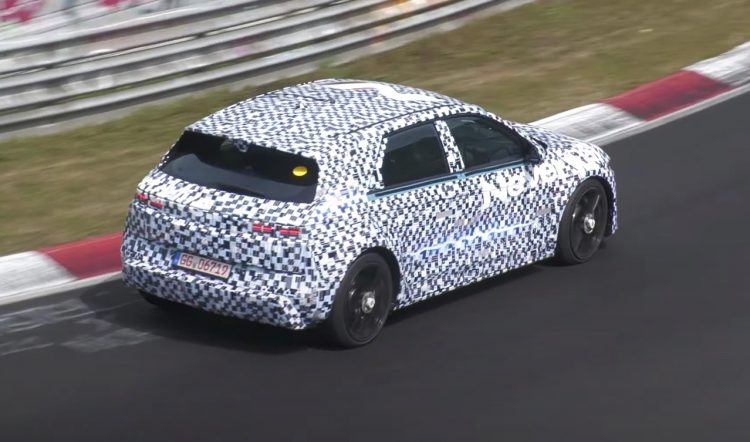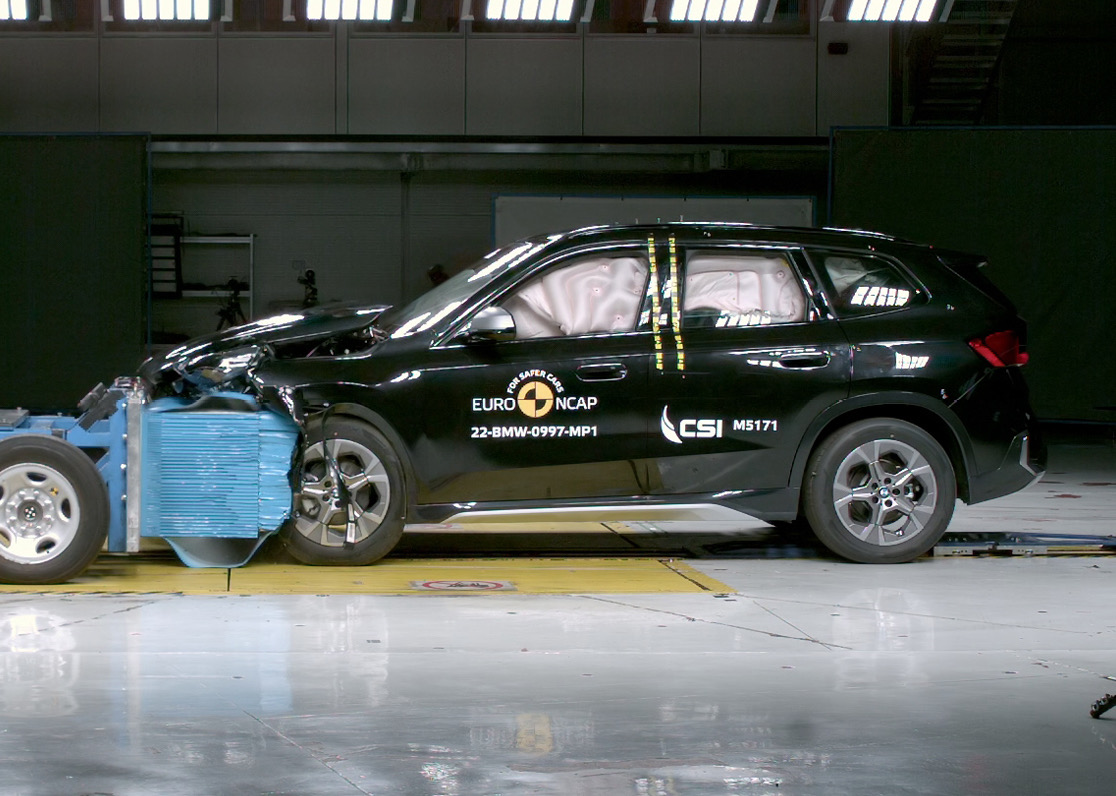Hyundai’s upcoming IONIQ 5 N and IONIQ 6 N will feature a clever ‘virtual grin shift’ gearbox function aimed at increasing driver engagement and excitement.
These will be the first fully electric N models, giving N enthusiasts a taste of what to expect from N as the greater company transitions to electrified powertrains. Like existing N models, the IONIQ 5 and 6 N will showcase a range of performance-focused components and features.
At the 2022 N Festival at The Bend Motorsport Park near Adelaide this week, former research and development boss and current technical advisor Albert Biermann sat down with media to talk about some of the key highlights of the cars. Media were also given the opportunity to test drive an IONIQ 6 N prototype, known as the RN22e concept, on the track (video and review coming on December 21).
One of the interesting new features is something Biermann tentatively calls, ‘VGS – virtual grin shift’. Not to be confused with a mechanical transmission, the software-driven system aims to replicate a number of artificial speeds and corresponding vibrations and sounds.
Users will be able to select this function in sport mode, with paddle shifters providing the control of each gear. While we can’t talk about drive impressions from our perspective of the RN22e drive, we can say the system does hold gears and hit a ‘redline’ of sorts. As in, it will not automatically upshift if the next ‘gear’ is not physically selected. The speed is also limited in each gear, like a conventional transmission.
Biermann says the engineering team is working on a rev-limiter function as well, which will emit an audio-based alert to notify the driver the powertrain is redlining. Biermann said:
“With the IONIQ 5 N prototypes we have the outside speakers and software for the virtual gearshifts, but now this is in the stage of fine-tuning. We’re not done yet.”
This function aims to retain some of the diver engagement that a traditional transmission offers. Why not fit a traditional transmission? Biermann says that with electric motors, it would add unnecessary complexity and weight to the cars. He also said the system runs a reduction gear to provide quick acceleration, however, the electric motors in the N models are being modified to spin at higher revolution, essentially increasing the top speed.
Being software-based means there will be a possibility of future downloadable updates, including during over-the-air updates, with the potential for new modes and sounds being introduced further into the model’s lifecycle.
Speaking of modes, the new performance models will come with a number of sound modes, including internal and external. The idea is to have a rear-mounted speaker behind the rear bumper bar providing an energetic rumble during slow speed ‘idling’, as well as different engine sounds during acceleration.
Biermann says the team is even looking at introducing pops and crackles during deceleration, a bit like the existing i30 N and so on.
As for the powertrain, production specifications are yet to be confirmed. However, in prototype form the RN22e produces 430kW and 740Nm, using a 77.4kWh battery. We suspect the production N models will be tweaked further and could produce around 450kW or so.
The Hyundai IONIQ 5 N will be the first to arrive and is set to be the fastest track car Hyundai has ever offered. The IONIQ 6 N is expected to be slightly quicker when it arrives a bit later down the track, mainly thanks to its lower centre of gravity and sleeker aerodynamics. Check out the video below to see how the IONIQ 5 N is shaping up.
